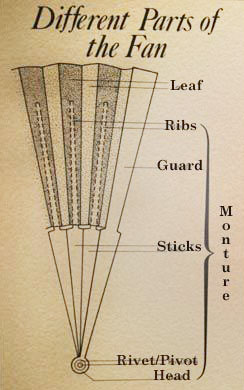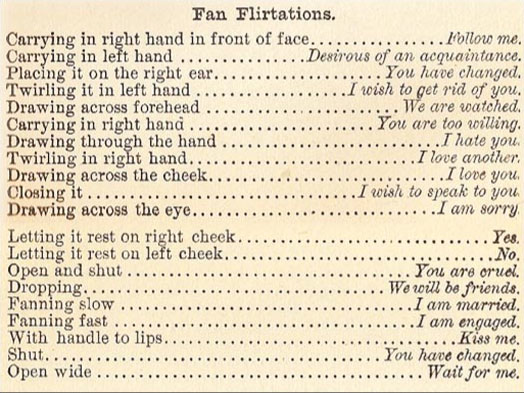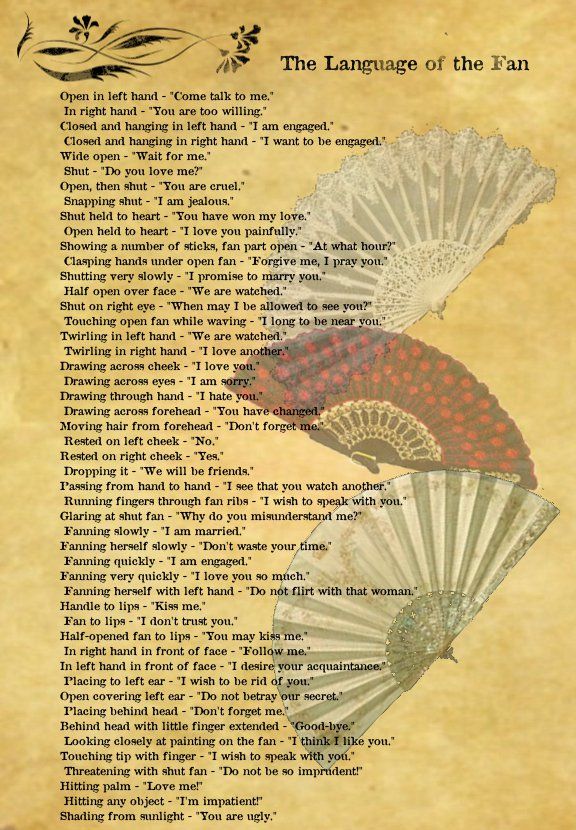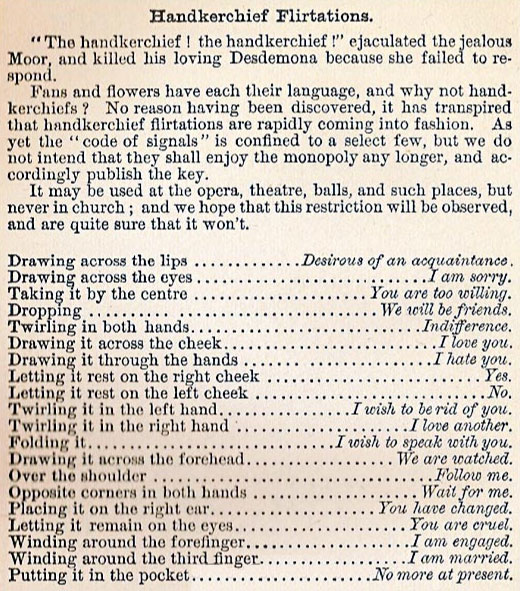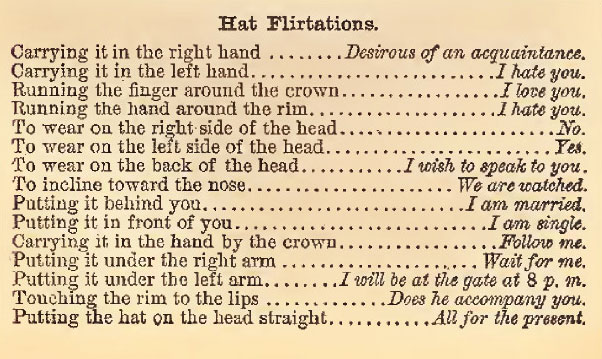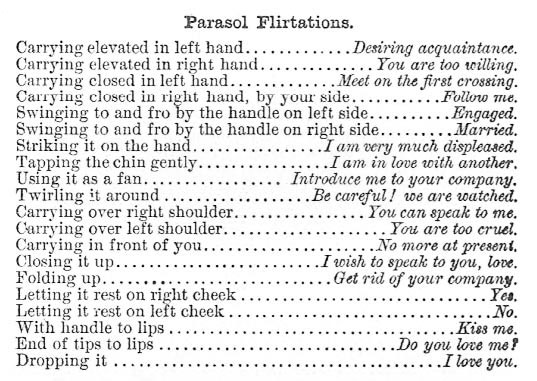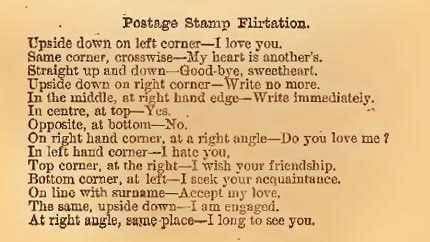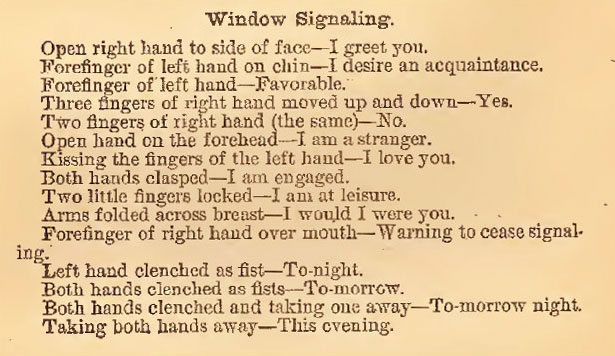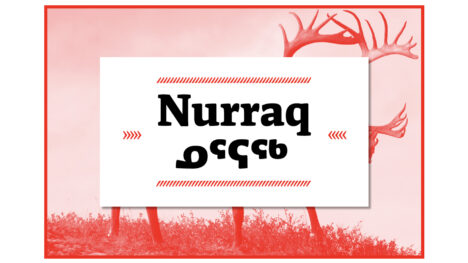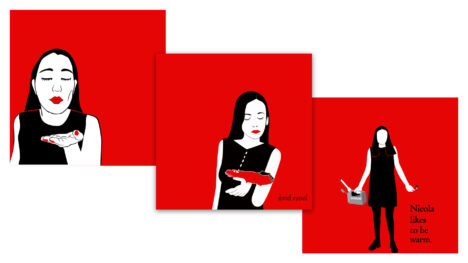Apart from the small matter of the horrifying death and illness we see around us and in the media, by now we are all heartily *tired* of this pandemic. Whether we are stuck at home, stuck working, stuck taking on new household/schooling responsibilities, any combination thereof or—I hope not—stuck in bed with *any* ailment, a diversion is necessary.
Behold: April is fan month!
For the next three weeks, I’ll be bringing you font-related posts about hand fans: the old, the new, the folding, the fixed, the genteel, the rude. Today’s post is about the Victorian language of flirtation using fans (and other items).
Ways to tell the coronavirus: “I wish to get rid of you.”
- Twirling a fan in one’s left hand or, alternately, placing it to one’s left ear
- Biting the tips of one’s gloves
- Twirling one’s handkerchief in the left hand
- Carrying one’s hat in the left hand
- Folding up one’s parasol
- Placing one’s stamp in the left corner of one’s envelope
As a left-handed person, I am buoyed by these acknowledgements of the power of the sinister (see what I did there?).
The below is from a post by the Molly Brown House Museum in Denver, CO. (Molly Brown is indeed the “Unsinkable Molly Brown” of Titanic legend! See more about her fascinating life here.)
The belief that the fan was employed in society to express various feelings or commands dates back to at least the early 18th century.
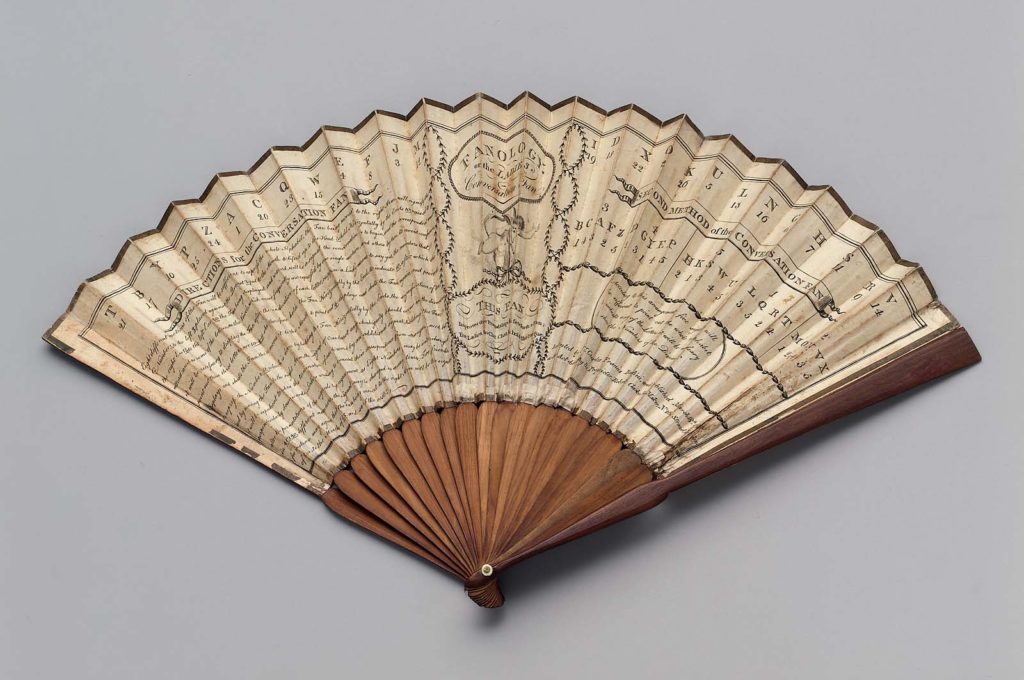
The relationship between the fan and a coded language or flirtation continued later with the printing of the “Fanology or Ladies Conversation Fan” in 1797. This fan, which was designed by Charles Francis Badini, included lettered inscriptions and explanations of how to communicate in code. One example contains “Directions for the Conversation of fan” on the obverse with “Familiar Questions with their respective answers” on the reverse. The directions begin by saying that eight different motions are all that are needed to impart the whole alphabet. The position of the fan to various parts of the face indicates which number is being referred to and each number is related to a different letter to create a coded language.
…
[Many guides to flirting with fans and other items were published in the popular press.] Whether or not these items were actually used as a secret language, it is clear that authors and readers alike enjoyed publishing and reading about the possibilities of using these everyday items as a means of flirtation. Below are the keys for your use and edification. Flirt wisely!
Other flirtations
Sources:
Addison, J. (1837) The Works of Joseph Addison, Vol 1. New York: Harper and Brothers.
Beaujot, A. (2012) Victorian Fashion Accessories. London: Berg.
Duvelleroy House. Duvelleroy Eventalliste 1827. [E-Reader] https://en.calameo.com/books/004031713395b2c6f5063
Museum of Fine Arts Boston. Fanology of the Ladies Conversation Fan. Retrieved from https://www.mfa.org/collections/object/fanology-or-the-ladies-conversation-fan-123930
Ovid. Amores 1.4. Translated by Wikisource. (February 2014) Retrieved from https://en.wikisource.org/wiki/Translation:Amores/1.4
Starp, A. (2018, April) The Secret Language of Fans. Retrieved from https://www.sothebys.com/en/articles/the-secret-language-of-fans
Wheman, H. (1890) The Mystery of Love, Courtship and Marriage Explained. New York: Wheman Brothers.
